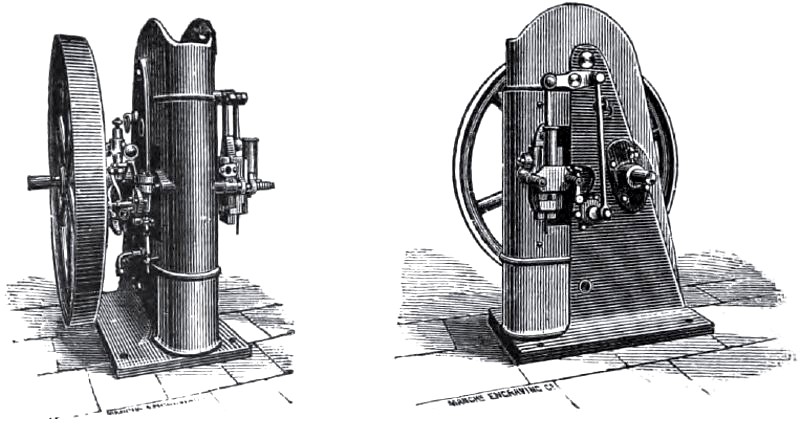|
Title: |
1902 Article-C. Linford & Co., Ltd., Gas Engine |
|
Source: |
Gas & Petroleum Engines, 1902, pg. 162 |
|
Insert Date: |
9/12/2024 7:55:08 PM |
Linford. A new cycle of operations in the gas engine, invented by CHARLES LINFORD, patent No. 330 of 1880, has for its sole object to clear the cylinder and passages of any residual burnt gases from the previous explosion, by drawing into the cylinder, during one stroke, and discharging through the exhaust, by the return stroke, a scavenger charge of fresh air, before taking in each charge of explosive mixture to be dealt with as in the Beau de Rochas cycle. The complete cycle of operations is performed by six strokes of piston as follows: (1) drawing in the charge of gas and air; (2) compression of the charge of gas and air; (3) ignition, combustion and expansion; (4) exhaust, expelling the products of combustion; (5) drawing in a scavenger charge of air only; (6) expelling the scavenger charge of air mixed with residual burnt gases. Single-acting engines on the Linford cycle have only one explosion to every three revolutions of the crankshaft; and in double-acting engines, two explosions to three revolutions. On this account it is also known as the three-cycle type, although really the three-revolution cycle.
The first practical use of this scavenger arrangement appears to be in the Linford vertical gas engine, shown in Fig. 86, brought cut early in 1880. The charge of gas and air is admitted between two pistons working in opposite directions in the cylinder. The return stroke compresses the charge. The explosion then takes place between the two pistons, forcing one upwards and the other downwards. The impulse is transmitted by rocking levers to the cranks, which being in opposite directions avoid shock on the crankshaft. Hence it was called the "automatic" balanced gas motor. After the explosion and exhaust strokes a "scavenger" charge of air alone is drawn into the cylinder and discharged through the exhaust pipe. The engine was necessarily bulky for the power, with only one working stroke in six.
A large fly-wheel would be required to give steady running. A governor controlled the supply of gas to regulate the speed. In the year 1880 this vertical engine was built by Messrs. C. Linford and Company, of Leicester, in sizes of 1 to 5 effective horse-power at speeds of 140 to 200 revolutions per minute.
Subsequently Linford patented improvements in his horizontal engine, which promised to be a formidable rival to the Otto, when the decision against Linford, and in favour of Otto's patent, in the Court of Appeal was a great blow to the gas engine industry in this country. |
|
 1902 C. Linford & Co., Ltd., Gas Engine
1902 C. Linford & Co., Ltd., Gas Engine
|
|